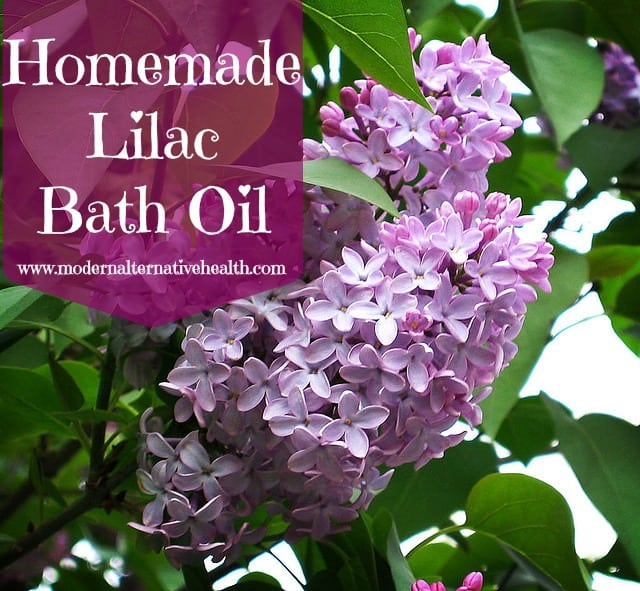Written by Dawn Combs
Every spring, I watch the lilacs for any sign of blooming. I always think, “A watched pot never boils.” I’m not sure what I expect to happen when I check them several times in one afternoon! When those beautiful blooms finally open, the race is on to see how much time I can spend breathing in their heavenly scent. All too soon, the blooms will fade, and this experience is lost to me for another year — unless I bottle some up to savor all year!
I’m not a fan of synthetic lilac perfume. It simply must be the real thing. If you’re as crazy about lilacs as I am, I will share my secret to capturing them in a bottle. This is the perfect flower for making my favorite bath oil.
Lilac Bath Oil
Ingredients:
- Oil of choice
- Lilac (or any other strongly scented flower)
Directions:
Step 1: Choose an oil. While olive oil is the traditional choice for herbal oils, it is best to reach for a lighter oil that soaks into the skin quickly when you make bath oils. I like grape seed oil, but you could use almond, apricot kernel, jojoba, or sesame.
Step 2: Pick your flowers. I use lilac, but you can choose any other strongly scented flower. Pick your flowers in the morning (around 10-11 am) and spread them out in the shade. The process of wilting your flowers is very important. Using them fresh-picked will create too much water content in your oil. This will result in a cloudy, rancid oil you will not want to use. The natural question here is if you couldn’t just use dried flowers. You could, but you won’t capture the essential oils and vibrancy you can get in a slightly wilted, fresh flower.
Step 3: Roughly chop the flowers and place them in a glass jar. The jar size depends on how much oil you wish to make. I like to cover my chopped flowers with 2-3 inches of oil. A quart jar may be enough if you’re doing this for yourself. You may want to do a half-gallon if you want enough for gifts.
Step 4: Steep. Find a quiet, shady spot on your countertop or outside porch. Whatever location you choose, you will want to remember to gently shake your oil every couple of days. For a traditionally prepared oil, this process will take between 4-6 weeks. Check your oil (smell it) after 2 weeks; you may find that you like it exactly as is and don’t need any more time.
Step 5: Strain. Use a fine mesh strainer to separate your finished oil and bottle it. Glass is best, but beyond that, you can use anything from a recycled wine bottle to an antique store treasure you find just for this purpose.
Step 6: Enjoy! Your bath oil is ready to use as a moisturizer when you step out of the shower, as a bath additive, or even a massage oil.
Note: Be sure to store your oil away from direct sunlight or heat; it should last a year or more.







How long do you let them wilt?
Same question as Ashley – how long do you let them wilt?
What other flowers would be good for this purpose?
would this work as a body oil too?
Hmm it looks like your website ate my first comment (it was super long) so I guess
I’ll just sum it up what I wrote and say, I’m thoroughly enjoying your blog.
I as well am an aspiring blog writer but I’m still new to the whole thing.
Do you have any recommendations for beginner blog writers?
I’d certainly appreciate it.
Do I chop them into like a fine texture or just into chunks? Stem and all?
Hi Kelly,
Thank you for this info!
Do you think that machines that infuse botanicals into oil or butter could work with lilac as well, in terms of creating a scented oil?
Thank You!